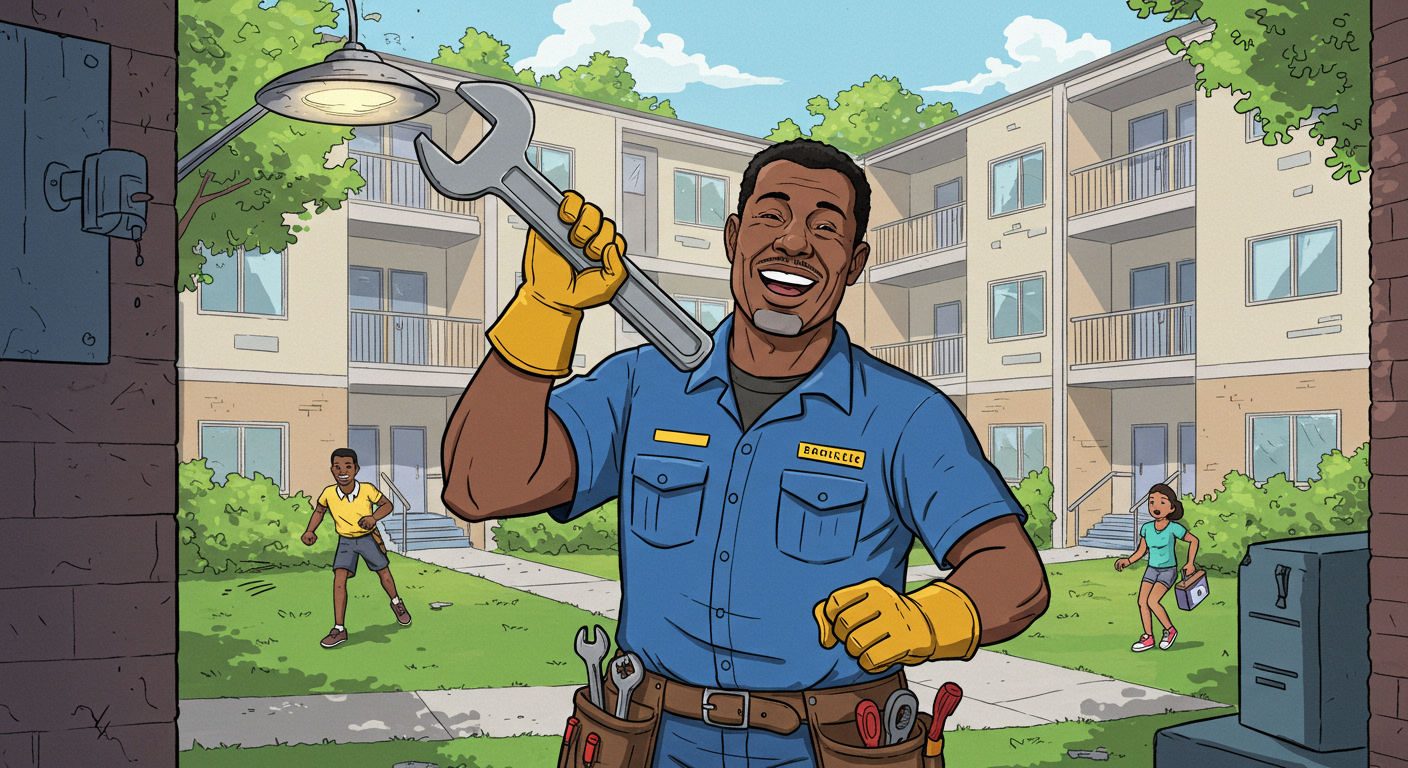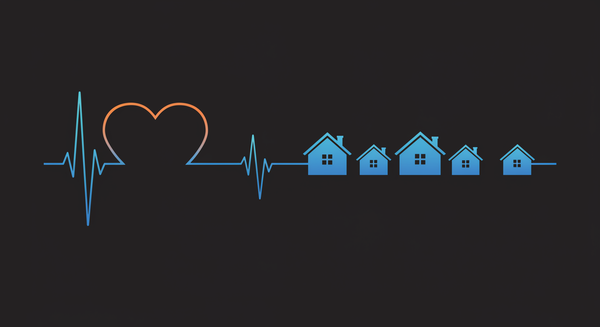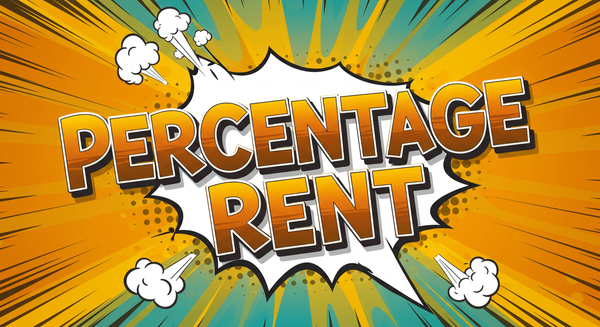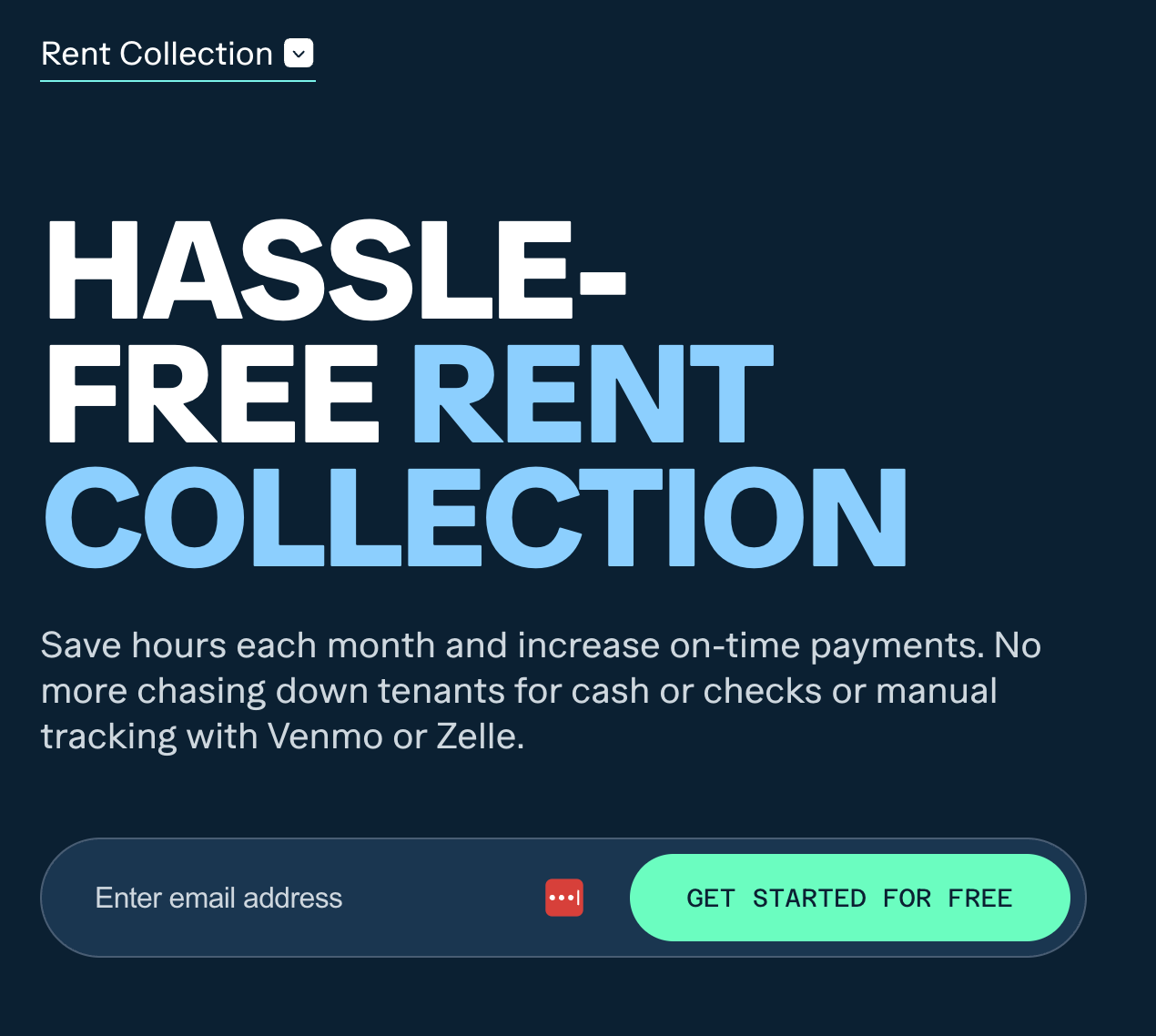Tenant Turnover vs Retention: Cost Analysis & Solutions
A data-driven financial analysis for property managers and real estate investors

What if I told you that a single tenant leaving your property could cost you more than three months of rent? Recent industry data reveals that tenant turnover now averages $3,872 per unit—with some properties facing costs as high as $5,000. Yet most property managers drastically underestimate these expenses, focusing only on obvious costs while missing the hidden financial drains that can devastate cash flow.
The harsh reality? The average cost of tenant turnover is $2,500 – $5,000, but the true impact extends far beyond repair bills and cleaning fees. When you factor in lost rental income, administrative costs, marketing expenses, and opportunity costs, a high turnover rate can transform a profitable property into a financial liability overnight.
This comprehensive analysis breaks down the real costs of tenant turnover versus retention strategies, providing property managers and investors with data-driven insights to optimize their operations. You'll discover not just what turnover costs, but how strategic retention investments can generate measurable ROI while building long-term property value.
The Staggering Hidden Costs of Tenant Turnover
The 2025 Financial Reality
On average, tenant turnover costs $1750 per month that your property remains vacant, but this figure only scratches the surface. A recent report from Zego found that the average turnover cost in 2023 was $3,872, representing a significant increase from historical averages.
The financial impact varies dramatically by property type and market:
- Single-family rentals: $3,000-$5,000 per turnover
- Multifamily apartments: $1,750-$4,000 per unit
- Commercial properties: 30-40% of annual lease value
- Premium markets: Costs can exceed $6,000 per turnover
The national average cost of a turnover is equal to three month's rent not including the lost rent during the vacancy, making retention strategies a financial necessity.
Breaking Down the Cost Components
1. Lost Rental Income (50-60% of total cost)
The biggest expense isn't what you pay... it's what you don't collect. We see that the average tenant turnover rate costs $1,750 per month that the property remains vacant. For a $2,000/month unit vacant for two months, that's $4,000 in lost income before you've spent a dollar on repairs or marketing costs.
2. Administrative and Legal Costs (15-20%)
- Property management fees: 50-60% of one month's rent
- Legal document preparation and review
- Background checks and tenant screening: $15-40 per applicant
- Processing paperwork and lease agreements
3. Marketing and Advertising Expenses (10-15%)
- Professional photography: $100-300
- Online listing fees: $50 - $200 per platform
- Property showing coordination and travel costs
- Marketing materials and signage
4. Cleaning and Maintenance (20-25%)
- Professional deep cleaning: $200-500
- Paint and minor repairs: $500-1,500
- Carpet cleaning or replacement: $300-1,200
- Appliance repairs or updates: $200-800
5. Opportunity Costs (Often overlooked)
- Management time diverted from other properties
- Delayed capital improvements due to cash flow interruption
- Potential rent increases missed during vacancy periods
Retention Rate vs. Annual Profit
How retention improvements directly impact your bottom line
85%+ Retention
The Compound Effect of High Turnover
Property managers often focus on individual turnover costs without considering the cumulative impact. A property with 20% annual turnover rate versus 5% faces dramatically different financial realities:
Example: 50-unit property, $1,500 average rent
- High turnover (20%): 10 turnovers × $3,872 = $38,720 annual cost
- Low turnover (5%): 2.5 turnovers × $3,872 = $9,680 annual cost
- Annual savings from retention: $29,040
This $29,040 difference represents pure profit that flows directly to the bottom line, demonstrating why retention strategies should be viewed as revenue generators rather than expense centers.
Retaining current tenants eliminates vacancy periods, reduces marketing expenses, and minimizes turnover costs while maintaining steady cash flow.

Retention ROI: The Numbers Don't Lie
The Value of Retained Tenants
A retained resident is worth almost $900 each year on top of rent payments. This figure encompasses reduced turnover costs, operational efficiencies, and the stability that long-term tenants provide to property operations.
Calculating Retention ROI:
Consider investing $200 per unit annually in retention initiatives:
- Cost: $200 per unit
- Benefit: $900 additional value + $3,872 avoided turnover cost
- ROI: 1,936% return on retention investment
It's five times cheaper to keep clients than it is to generate new ones, a principle that applies directly to tenant relationships. This 5:1 ratio means every dollar spent on retention saves five dollars in acquisition costs.
Long-Term Tenant Value Analysis
Case Study: Mid-Size Property Portfolio (100 units)
Scenario A: High Retention Focus
- Annual retention rate: 85%
- Retention investment: $200 per unit ($20,000 total)
- Turnovers: 15 units × $3,872 = $58,080
- Total cost: $78,080
Scenario B: Minimal Retention Effort
- Annual retention rate: 65%
- Retention investment: $50 per unit ($5,000 total)
- Turnovers: 35 units × $3,872 = $135,520
- Total cost: $140,520
Annual savings from high retention focused strategy: $62,440
Over a five-year period, this retention-focused approach saves $312,200 while building a more stable, valuable property portfolio.
Target ROI Benchmarks for 2025
Good rental property ROI generally falls between 8% and 12% in current market conditions. Properties with strong retention programs consistently achieve the higher end of this range due to:
- Reduced operational volatility
- Predictable cash flow enabling strategic investments
- Lower management overhead per unit
- Enhanced property reputation and marketability

Root Cause Analysis: Why Tenants Leave
Controllable Factors (60% of turnover decisions)
Over 60% of customer turnover is controllable, with staff performance the largest determining factor in why a tenant moves out. Understanding these controllable factors provides clear direction for retention investments:
- Communication Breakdowns 72% of tenants prefer digital communication over traditional methods, yet many property managers still rely on phone calls and paper notices. Poor communication creates frustration that compounds over time, eventually driving tenants to seek properties with more responsive management.
- Maintenance Response Issues 20% of renters will move due to just one unresolved maintenance request. Emergency repairs should be addressed within 24 hours, while routine maintenance typically requires 3-7 business days. Properties exceeding these timeframes see significantly higher turnover rates.
- Rent Increase Strategies Sudden or unjustified rent increases trigger immediate apartment hunting. Small rent increases of $25-50 per month are generally acceptable to retain tenants, while larger increases often result in turnover costs that far exceed the additional revenue.
- Inflexible Lease Terms Rigid policies around pets, guests, or lease modifications force tenants to choose between compliance and lifestyle needs. Properties offering reasonable flexibility see measurably higher retention rates.
- Finding High Quality Tenants One of the best ways to hedge against high tenant turnover is to find quality tenants who are a good fit for your rental property to begin with. This includes background checks, Resident Score checks (similar to a credit score, but for renters), as well as income and job verification. If your property doesn't allow pets, or has a restricted breed list, these are all things that you should make sure your prospective tenants are aware of given the largest bloc of renter demographics today are pet-owners (or will be in the near future, based on current pet ownership statistics).
BASELANE Property Management Software
Over 40,000 real estate investors use Baselane to save time managing their property finances and grow their rental portfolio. The best part? It's FREE!
Market and External Factors (40% of decisions)
While external factors remain largely outside the property managers control, understanding these trends helps with retention planning:
Economic Pressures: 14-23% of renters incurred late fees in recent periods, with approximately 15% of American households (around 6 million) behind on rent payments. Financial stress increases tenant mobility as households seek more affordable options.
Rental managers who can be more flexible with deferred payment plans, reduced rents, cash for keys options, and other methods to mitigate against excessive losses in rental income will still perform despite these economic conditions.
Life Transitions: Job changes, family size changes, and lifestyle shifts drive predictable turnover patterns. Properties serving young professionals typically see higher turnover than those housing established families.
However, you'll find yourself in conflict with Fair Housing Laws if you pro-actively decline one demographic over another simply because you want to improve your retention rates.
Market Competition: New developments with modern amenities can attract tenants away from older properties, particularly when rent differences are minimal.
This is where surveys and innovation come into play. Do your residents enjoy biking? Add bike racks at your property. Add bike rental stations and/or complimentary bike rentals. Have a large room that's not being utilized properly? Convert it to a gym, movie theater, or some other type of amenity for your residents. Create a community garden. Add clothes drying lines for use in the Spring and Summer months. Bring people in to teach free (or paid) classes on things like gardening, candle making, marketing, or other skills that your community may be interested in –conduct surveys to identify what those community interests may be.

Proven Retention Solutions That Generate ROI
Communication Excellence: The Foundation Strategy
Modern tenants expect digital communication options and rapid response times. Properties implementing comprehensive communication strategies see measurable retention improvements:
Digital Communication Implementation:
- Email updates for policy changes and property news
- Mobile apps for maintenance requests and rent payments
- Text messaging for urgent communications
- Online tenant portals for account management
Response Time Standards:
- Emergency issues: Within 2 hours
- Routine maintenance: Within 24 hours
- General inquiries: Within 4 hours
- Rent and lease questions: Same day
Properties meeting these standards find that 70% of renters recommend properties where maintenance issues are handled quickly, creating positive word-of-mouth that reduces marketing costs for future leasing.
Response Time Standards
Clear benchmarks for tenant communication that drive retention
Strategic Pricing and Renewal Incentives
The $25-50 Rule: Research consistently shows that modest rent increases ($25-50 monthly) during renewal negotiations retain significantly more tenants than market-rate adjustments. The math is compelling:
- Modest increase: $300-600 additional annual revenue
- Avoided turnover: $3,872 in costs
- Net benefit: $4,172-4,472 per retained tenant
Effective Renewal Incentives:
- One-month rent discount for 24-month lease commitments
- Property upgrades (new appliances, fresh paint, flooring improvements)
- Parking or storage perks for loyal tenants
- Utility credits for energy-efficient behavior
These incentives typically cost $200-800 but prevent $3,872 in turnover expenses, generating ROI of 384-1,836%. Implementing effective tenant satisfaction strategies can increase lease renewal intentions by over 8%, making these investments even more profitable.
Property and Service Improvements
Energy Efficiency Investments 74% of renters prioritize energy-efficient properties when choosing a rental. Upgrades like programmable thermostats, LED lighting, and efficient appliances both attract tenants and provide utility savings that can be shared as retention incentives.
Smart Home Technology 54% of renters prefer properties with smart home features. Basic smart home upgrades (smart locks, thermostats, security systems) cost $300-800 per unit but significantly differentiate properties in competitive markets.
Strategic property amenity investments have been shown to reduce tenant turnover by 22% while increasing rental rates by 7% and decreasing vacancy duration by 15%.
Maintenance Excellence Programs Tenants stay an average of 50% longer in properties with high maintenance standards. Preventive maintenance programs cost more upfront but prevent emergency repairs and demonstrate property management commitment to tenant comfort.
Well-managed maintenance strategies create ripple effects through everything that matters: tenant retention, NOI, and lease renewals.
Community Building and Engagement
Creating Emotional Connections Properties that foster community see dramatically lower turnover rates. Successful strategies include:
- Monthly resident events (cost: $250-500 per event)
- Shared amenity spaces (community rooms, fitness areas)
- Resident communication platforms and social groups
- Holiday celebrations and seasonal activities
Personal Touch Approach Simple gestures create lasting impressions:
- Welcome packages for new tenants
- Birthday or anniversary acknowledgments
- Personal follow-up after maintenance completion
- Holiday greetings and small gifts
These low-cost initiatives ($20-50 per tenant annually) generate disproportionate loyalty returns.
Implementation Framework: Your 90-Day Retention Plan
Phase 1: Quick Wins (Days 1-30)
Communication System Upgrades
- Implement digital communication channels
- Establish response time standards
- Create maintenance request tracking system
- Set up automated renewal notices (90 days before lease expiration)
Maintenance Response Optimization
- Audit current response times
- Establish vendor relationships for rapid response
- Create emergency vs. routine maintenance protocols
- Implement tenant feedback system for completed work
Basic Tenant Satisfaction Assessment
- Survey current tenants about satisfaction levels
- Identify immediate improvement opportunities
- Document common complaint patterns
- Establish baseline metrics for improvement tracking
Phase 2: Strategic Implementation (Days 31-60)
Technology Integration
- Launch tenant portal or mobile app
- Implement online rent payment systems
- Set up automated communication workflows
- Create digital maintenance request system
Renewal Incentive Program
- Design tiered incentive structure
- Calculate ROI for different incentive levels
- Create renewal conversation scripts for property managers
- Establish approval processes for incentive requests
Staff Training Initiative
- Train team on retention-focused customer service
- Establish communication standards and protocols
- Create tenant relationship management processes
- Implement retention metrics in performance reviews
Phase 3: Long-Term Investment (Days 61-90)
Property Improvement Planning
- Assess units for energy efficiency upgrades
- Plan smart home technology installations
- Schedule preventive maintenance improvements
- Budget for amenity enhancements
Community Building Launch
- Plan first resident event
- Create tenant communication channels
- Establish community spaces or programs
- Launch referral incentive program
Data Analytics Implementation
- Set up retention rate tracking
- Create turnover cost analysis reports
- Implement tenant satisfaction monitoring
- Establish ROI measurement for retention initiatives
Measuring Success: KPIs That Matter
Essential Retention Metrics
Tenant Turnover Rate Calculation: (Number of move-outs in period ÷ Total units) × 100
Industry Benchmarks:
- Excellent retention: <10% annual turnover
- Good retention: 10-15% annual turnover
- Average retention: 15-25% annual turnover
- Poor retention: >25% annual turnover
54.1% of renters renewed leases in October 2024, up 120 basis points from the previous year, indicating industry-wide improvements in retention strategies.
Cost Per Retention vs. Cost Per Acquisition
Track the relationship between retention investments and turnover savings:
- Monthly retention investment per unit
- Avoided turnover costs per retained tenant
- Return on retention investment (RORI)
- Average tenant lifespan improvements
Revenue Stability Metrics
Cash Flow Predictability
- Percentage of revenue from renewals vs. new leases
- Average tenant tenure
- Vacancy rate reduction
- Rental income consistency month-over-month
Property Value Enhancement
- Occupancy rate improvements
- Market positioning relative to comparable properties
- Reputation metrics (online reviews, referral rates)
- Long-term asset value appreciation
ROI Calculation Framework
Simple Retention ROI Formula: (Avoided turnover costs + Additional tenant value) ÷ Retention investment costs
Example Calculation:
- Retention investment: $300 per unit annually
- Avoided turnover cost: $3,872 per retained tenant
- Additional tenant value: $900 per year
- ROI: ($3,872 + $900) ÷ $300 = 1,591% return
Use our rental yield calculator to measure the ROI of your specific retention investments and compare them against other property improvement options.
Payback Period Analysis: Most retention investments pay for themselves within 1-3 months of preventing a single turnover, making them among the highest-ROI activities in property management.
Technology Tools for Retention Excellence
Property Management Software Integration
Modern property management platforms offer retention-focused features:
- Automated renewal notifications and tracking
- Tenant satisfaction survey tools
- Maintenance request management with response time tracking
- Communication centralization across multiple channels
Data Analytics and Predictive Tools
Advanced analytics help identify at-risk tenants before they decide to leave:
- Payment pattern analysis
- Maintenance request frequency monitoring
- Communication engagement tracking
- Lease renewal probability scoring
Tenant Experience Applications
Dedicated tenant apps improve satisfaction and retention:
- Mobile rent payment and account management
- Digital maintenance requests with photo capability
- Community communication features
- Event notifications and building updates
The Future of Tenant Retention
Emerging Trends for 2025
AI-Powered Predictive Analytics Machine learning algorithms now identify tenant flight risk 3-6 months before lease expiration, enabling proactive retention interventions.
Hyper-Personalized Tenant Experiences Properties are implementing individualized communication preferences, customized renewal offers, and personalized amenity packages based on tenant behavior data.
Sustainability as Retention Driver Environmental consciousness among renters continues growing, making energy efficiency and sustainability initiatives increasingly important for retention.
Flexible Lease Terms Month-to-month options, seasonal pricing adjustments, and lifestyle-based lease modifications are becoming competitive advantages in retention.
Conclusion: Making the Case for Retention Investment
The data is unequivocal: tenant retention generates exceptional ROI while building long-term property value. With average turnover costs of $3,872 per unit and retention investments typically under $500 annually, the math strongly favors retention-focused strategies.
Key Takeaways:
- Turnover costs are consistently underestimated by 40-60% when hidden costs are properly calculated
- Retention investments generate 400-1,900% ROI through avoided turnover costs alone
- 60% of turnover decisions are controllable through improved management practices
- Small improvements in retention rates create massive improvements in property profitability
Immediate Action Steps:
- Calculate your actual turnover costs using the comprehensive framework provided
- Survey current tenants to identify immediate improvement opportunities
- Implement digital communication tools and response time standards
- Create a renewal incentive program with ROI-based budget approval
- Establish retention metrics and tracking systems
The choice is clear: invest modestly in retention strategies or continue paying the massive hidden costs of tenant turnover. Properties implementing comprehensive retention programs not only improve their financial performance but create more stable, valuable assets that outperform market averages.
Ready to transform your tenant retention strategy? Download our Complete Tenant Retention Toolkit, including turnover cost calculators, retention strategy checklists, and ROI tracking templates. This comprehensive resource provides everything needed to implement data-driven retention programs that generate measurable results.
Frequently Asked Questions
How much does it cost to turnover an apartment?
The average apartment turnover costs $3,872 according to 2023 industry data, with costs ranging from $1,750 to $5,000 depending on property type, location, and vacancy duration. This includes lost rental income (typically the largest component), administrative costs, marketing expenses, cleaning and repairs, and tenant screening fees. Urban markets and premium properties often see costs at the higher end of this range, while rural properties may experience lower turnover expenses.
Calculate your specific turnover costs using our interactive calculator above to understand your property's actual financial impact.
How long does it take to turnover an apartment?
Most apartment turnovers take 3-6 weeks from tenant move-out to new tenant move-in. The timeline breaks down as follows:
- Week 1: Move-out inspection, cleaning, and immediate repairs
- Weeks 2-3: Marketing, showing property, and tenant screening
- Weeks 3-4: Lease processing and move-in preparation
Factors that extend timeline include extensive repairs, competitive markets with longer vacancy periods, and seasonal demand fluctuations. Properties with streamlined processes and preventive maintenance programs typically achieve faster turnovers.
How to calculate apartment turnover rate?
Turnover Rate Formula: (Number of move-outs in period ÷ Total units) × 100
Example: If you have 50 units and 8 tenants moved out in one year: (8 ÷ 50) × 100 = 16% annual turnover rate
Track this metric monthly and annually to identify trends. Use our rental yield calculator to measure how turnover rates impact your overall property ROI.
What is a good turnover rate in Real Estate?
Industry Benchmarks:
- Excellent: Less than 10% annual turnover
- Good: 10-15% annual turnover
- Average: 15-25% annual turnover
- Poor: Above 25% annual turnover
Current industry data shows 54.1% of renters renewed leases in October 2024, indicating improving retention rates industry-wide. Properties with strong retention programs consistently achieve rates below 15%.
What are the costs associated with apartment turnover?
Apartment turnover costs include both obvious and hidden expenses:
Direct Costs:
- Lost rental income during vacancy (50-60% of total cost)
- Cleaning and repairs ($500-2,000)
- Marketing and advertising ($200-500)
- Tenant screening ($150-300)
Hidden Costs:
- Administrative time and legal fees
- Opportunity costs from delayed improvements
- Potential rent increases missed during vacancy
- Management time diverted from other properties
The average total equals approximately three months of rent, making retention strategies financially essential.
Why is tenant turnover a concern for landlords?
Tenant turnover creates multiple financial and operational challenges:
Financial Impact:
- Immediate revenue loss during vacancy periods
- Substantial out-of-pocket expenses for turnover process
- Reduced property value due to income instability
- Lower ROI compared to properties with stable tenancy
Operational Disruption:
- Increased management workload and stress
- Difficulty planning capital improvements
- Higher insurance and financing costs due to income volatility
- Time diverted from portfolio growth activities
Research shows retained residents are worth almost $900 annually beyond rent payments, making retention strategies crucial for long-term success.
What strategies can property managers implement to minimize tenant turnover?
Immediate Implementation (30 days):
- Establish 24-hour emergency response standards
- Set up digital communication channels (email, text, portal)
- Create automated lease renewal reminders (90 days before expiration)
- Survey tenants for satisfaction baseline
Strategic Investments (60-90 days):
- Implement strategic amenity improvements (22% turnover reduction)
- Launch renewal incentive programs with modest rent adjustments
- Develop preventive maintenance schedules
- Create community building initiatives
Long-term Results: Properties implementing comprehensive retention programs typically see 15-25% improvements in renewal rates within six months.
How long do tenants stay in a rental property?
The average tenant stays approximately 3 years in a rental property, though this varies significantly by:
Property Type:
- Single-family homes: 3-5 years average
- Apartments: 2-3 years average
- Luxury properties: 2-4 years average
Demographic Factors:
- Young professionals (22-30): 1-2 years
- Families with children: 4-6 years
- Older tenants (40+): 3-7 years
Market Conditions:
- High-growth job markets: Shorter tenancies
- Stable suburban areas: Longer tenancies
- Rent-controlled markets: Extended stays
Properties with excellent maintenance standards see tenants stay 50% longer than average.
What is the turnover process between tenants?
Phase 1: Move-Out (Days 1-7)
- Conduct move-out inspection with departing tenant
- Assess security deposit deductions
- Document property condition with photos
- Begin immediate cleaning and repairs
Phase 2: Property Preparation (Days 8-21)
- Complete necessary repairs and improvements
- Professional cleaning and staging
- Update marketing materials and photography
- List property on rental platforms
Phase 3: Tenant Acquisition (Days 22-35)
- Screen and show property to prospects
- Process applications and conduct background checks
- Negotiate lease terms and complete documentation
- Coordinate move-in inspection and key transfer
Efficiency Tips: Properties with documented processes and established vendor relationships complete turnovers 20-30% faster than those handling each turnover reactively.
Why is property maintenance crucial for tenant satisfaction and preventing turnover?
Property maintenance directly impacts tenant retention through multiple channels:
Satisfaction Correlation:
- 70% of renters recommend properties with fast maintenance response
- 20% of renters move due to just one unresolved maintenance request
- Well-managed maintenance strategies create ripple effects through tenant retention, NOI, and lease renewals
Financial Impact:
- Preventive maintenance costs 3-5x less than emergency repairs
- Properties with maintenance excellence achieve 15-20% higher renewal rates
- Deferred maintenance issues drive 40% of preventable turnovers
Best Practices: Establish 24-hour emergency and 72-hour routine response standards, implement preventive maintenance schedules, and maintain vendor relationships for rapid response.
How can landlords reduce turnover costs and tenant vacancies?
Prevention Strategies (Highest ROI):
- Communication Excellence: 72% of tenants prefer digital communication - implement email, text, and portal options
- Maintenance Response: Properties meeting 24-hour emergency standards see 25% fewer turnovers
- Strategic Pricing: Modest rent increases ($25-50) retain significantly more tenants than market-rate adjustments
- Renewal Incentives: Small incentives ($200-800) prevent $3,872 turnover costs
Process Optimization:
- Streamline turnover procedures with documented checklists
- Maintain vendor relationships for rapid response
- Use tenant satisfaction surveys to identify issues early
- Implement technology for efficiency and tenant convenience
Investment Priority: Focus retention budget on communication technology, maintenance responsiveness, and modest property improvements rather than reactive turnover management.
About This Analysis: This article incorporates data from over 30 industry sources, including the National Apartment Association, RealPage Analytics, property management companies, and academic research. All cost figures and ROI calculations are based on 2024-2025 market data and industry benchmarks.
Read more

Pet Deposits: The Ultimate Guide for Property Managers & Tenants
Confused about pet deposits, pet rent, or service animal rules? Learn everything landlords need to know—legal limits, refund rules, best practices, and templates for pet addendums.

The Property Pulse by LandlordDoc | August 15th, 2025
Your pulse of what's happening in the rental industry right now Issue #6 | August 15, 2025 | 3-minute read

Percentage Rent: The Complete Landlord & Tenant Guide
Percentage rent is a commercial lease structure where the tenant pays a fixed base rent plus a percentage of gross sales once revenue rises above a set breakpoint

Pass-Through Expenses in Property Management | The Complete Guide
Pass-through expenses are specific property-related costs billed directly to tenants above and beyond the standard base rent outlined in their lease agreements





